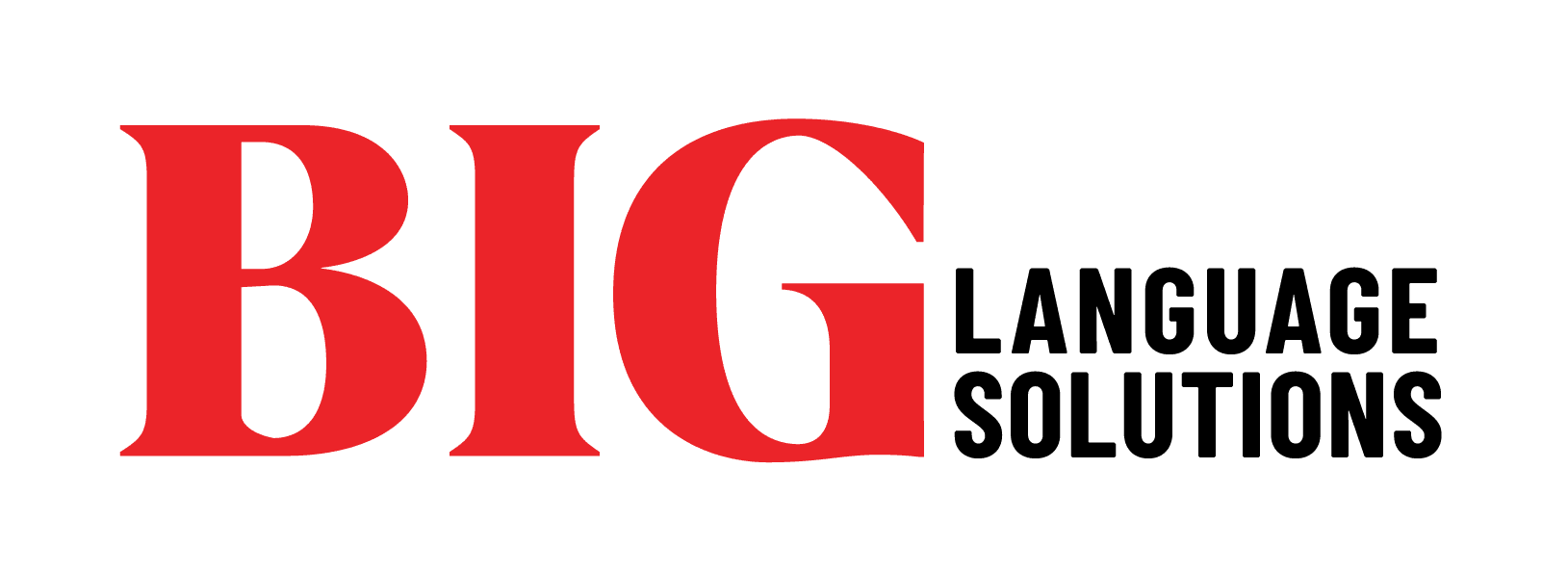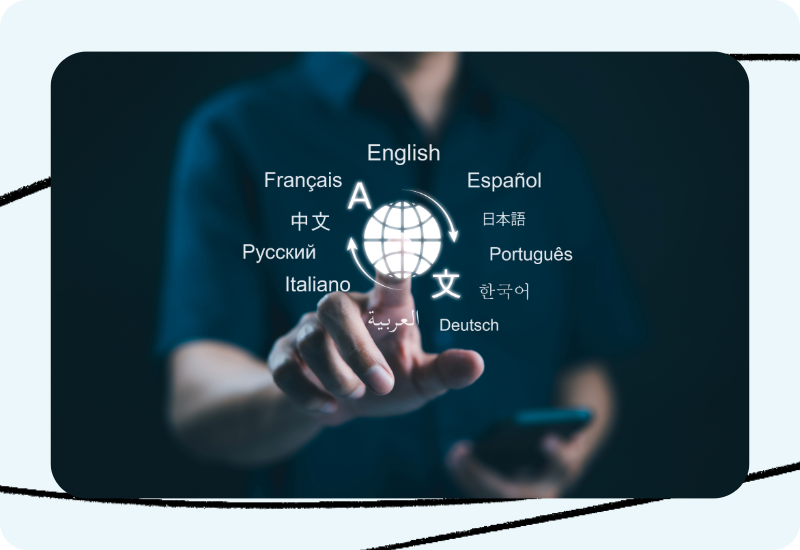With language access requirements and needs changing all the time and budgets getting even tighter, increasing spending on language access isn’t an option. However, spending smarter is—and we’re here to help you figure that out. Technology and a clear plan focused on top priorities can help you stretch your budget while maintaining quality and ensuring the best outcomes for your customers and community members..
Here we offer 8 key approaches you can implement to help you keep providing top-notch language access services like translation and interpretation for people with limited English proficiency (LEP) despite budget constraints.
Implement Technology to Reduce Translation and Interpretation Costs
Technology can speed up workflows and make the process more efficient without compromising accuracy or confusing customers or patients. However, tech, including AI, shouldn’t be a full replacement for professional interpreting services or professional document translation if you want to ensure accuracy, compliance, and deep understanding of the human experience.
That said, here are some valuable and viable tools that can help you stretch that budget:
● Translation Memory (TM) tools save previously translated content, allowing you to reuse it instead of paying for the exact translation multiple times.
● Machine Translation (MT) helps reduce costs for repetitive, non-critical content like some appointment reminders, customer service scripts, and FAQs and policies. When trained with industry-specific content, it can be quite accurate, and when combined with human review (called post-editing), it can provide high-quality results at lower cost.
● AI-driven interpretation tools can handle simple, repetitive interactions, like appointment scheduling or common customer inquiries.
● Video remote interpretation tools offer a cost-effective solution for faster communication when in-person interactions are not required. Video interpretation can enhance patient care and communication outcomes without overspending. It also saves costs with shorter appointment wait times and fewer interpreter commute expenses.
Prioritize High-Demand Languages for Translation
A successful language access program focuses on impact, not just the number of languages covered. In fact, with over 350 languages spoken in the US, translating everything into all languages is just not practical or even possible. We recommend prioritizing the languages most frequently required by the communities you serve, or regulations.
Use census data, service reports, and community feedback to identify your community’s most widely used languages and direct resources where they’ll make a significant difference.
Take a Tiered Approach to Translation Based on Quality Needs
Another way to prioritize is with a tiered approach that takes your quality requirements into account. Where the quality needs are not high and where minor errors will not impact outcomes, you can choose less expensive translation methods like MT.
This will allow you to translate more content for the same budget. However, with language access documentation, make sure you involve a human for final checks, because so much of this communication (like for medical or legal situations) requires precision.
Prioritize Critical Content for Translation
Allocate more resources for translating crucial information and high-stakes materials, like legal notices, medical instructions, informed consent documents, and public safety announcements.
If it’s less important, you might not need to translate it all, or you could consider summary translations for longer-form content to reduce costs without sacrificing accessibility.
Centralize and Standardize Language Access Activities
One structured program eliminates duplicate work and unnecessary costs, rather than letting each department or location handle translations separately. With a dedicated person (like a Language Access Coordinator) or team overseeing the process for the whole organization, you can ensure consistency, efficiency, and smarter spending.
When you partner with a single provider to build and run that program, it allows you to streamline services, negotiate volume discounts, and maintain consistency. That partner will use technology consistency across your program for cost savings.
Find Grants and Community Resources for Translation Services
These funding sources can ease financial strain and expand language access programs without straining internal budgets. Local organizations, too, can provide additional support. Nonprofits, advocacy groups, and educational institutions often have shared language access goals, making resource-sharing a cost-effective way to extend services.
Another valuable approach is leveraging bilingual volunteer networks for non-sensitive tasks. Community members can provide basic interpretation services for schools and even assist with outreach, simple translations, or public events.
Promote Self-Service Options
Self-service portals, automated chatbots, and interactive voice response (IVR) systems can resolve many inquiries without staff intervention and enable people to find information independently, where feasible, minimizing the need for one-on-one translation and on-site interpreter services.
For example, you can make essential documents available online in multiple languages. These resources should be easy to find, download, and navigate.
Review Your Program Yearly to Look for Efficiencies
You should take a critical look at your language access program regularly to make sure it aligns with current regulations, is meeting community needs, and is cost efficient. Here are some questions to ask:
● Which languages are in the highest demand? Has your demographic shifted? Look at your translation and interpretation requests and use this info to focus your budget where it matters most.
● Do you have multiple vendors where you just need one? For example, one vendor handling Asian languages, and another for Spanish.
● Is your vendor partnering to help you implement technology and streamline processes?
● Are your customers and patients getting what you need? Get feedback via questionnaires to help you evaluate the quality of your language access services. You can also review incident reports to find whether language barriers have impacted service quality. If you don’t have a detailed, formal language access plan yet, our language plan template makes the process simple and manageable.
How BIG Language Solutions Can Help
At BIG Language Solutions, we’ll partner with you to make sure you meet language access goals with speed, accuracy, and efficiency–while sticking to your budget. There are a number of ways we help streamline costs:
● Program customizations and workflows. We listen to your goals and create a process that drives the outcomes you need.
● Industry-trained Neural Machine Translation (NMT) engines, that can be further customized by us with your data, allows for more precision and better alignment with your business. Also, LanguageNow™, is our secure, instant translation tool powered by the same customized engines.
● Fast translations with LanguageExpress™. With our proprietary tech-enabled workflow, you can automate and speed up translation requests and processing, so you can serve a larger community in less time with more content. Automation also reduces the need for manual coordination, so you pay for fewer admin hours.
● Reuse of past approved translations. The integrated Translation Memory component ensures you don’t pay to translate the same content multiple times.
● Our years of expertise in your industry will reduce the time it takes to get language access up and running. We can also identify gaps and challenges and innovate to improve processes which means a shorter path to cost and resource efficiency for you.
● We offer all languages and all services you may need for language access in one place, providing you with efficiency and economies of scale.
What’s next?
BIG Language Solutions is your one-stop shop for language access. We provide you with:
● Support for 300+ languages from expert linguists and interpreters specializing in healthcare, government, education, and nonprofits
● End-to-end fulfilment that includes composition, translation, and distribution so your materials get delivered where you need them
● Accessible & ADA-compliant formats: American sign language, large print, braille, and audio
Our experts help ensure clear communication for those who rely on your services without overloading your team. With 24/7 language support, broad coverage, and services that guarantee improved outcomes for your consumers, you can meet language access needs efficiently and with confidence.
If you’re looking for ways to simplify and strengthen your language access program, we’re here to help. Schedule a consultation for more details on how BIG Language Solutions can support your multilingual communication needs.





